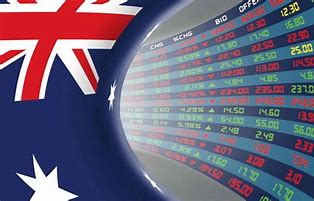
Cryptocurrency or Bitcoin may be a atypical phraseology for an ordinary Indian citizen but you will be surprised to know that all the authorized exchanges in INDIA have recorded an extraordinary growth in the Cryptocurrency business since March 2020. Any conjecture amongst the investors or the Bankers has been removed by the Supreme court order dated 4th, March 2020, setting aside the circular issued by RBI in April 2018. Though no formal regulatory has been issued by the RBI for explicating the matter, the Banks/Customers/Exchanges have already started conducting the business.
There are pros and cons attributed to this unregulated currency but statements coming from the sources like Bill Gates creates confidence:
“Bitcoin is a technological tour de force.”– Bill Gates.
The founder of Microsoft has a great passion for this currency and already holds a considerable quantity of Bitcoins: https://tradingbeasts.com/featured/cryptocurrency-quotes/
There has been an unprecedented increase in business over the last few months in India. The previous eight months starting from March 2020 till date have witnessed the growth of cryptocurrency business in India by more than 600%. Reportedly, the Indian cryptocurrency business with a monthly turnover of more than 23 million dollars stands at number 2 in Asia and number 6 in the world. Mind-blowing?
Launched in 2009 by an unknown person using the alias Santoshi Nakamato, Bitcoin is the new paperless currency that doesn’t have control by the Govts or Banks. It is a digital currency and you can not touch it with your hand. You can buy anything from hotel booking to furniture through this currency.
ATM’s and other dispensing centers facilitate convenient use of cryptocurrency by the customers in many countries. You can use your smart phone or computer to send or receive money without involvement of any Bank. The technology has brought a revolution in the Financial markets with more and more institutions coming out to provide commercial services to their customers.

With a limited possibility of mining maximum 21 million of Bitcoins, the persistent demand of Bitcoin results in high volatility in the market. The market data suggests 18.75 million Bitcoins are already in circulation as of today. Big institutional investors have been amassing this coin continuously as the price is gradually moving beyond the reach of retail investors. The price of one Bitcoin has scrambled up from 8000$ to 27000$ within 12 months. That makes one Bitcoin equal to 27000×78= Rs.2079000 (Twenty Lac and seventy-nine thousand). Isn’t it a huge amount for one unit of Bitcoin? However, you can buy a small fraction of Bitcoin also.
Unlike, the currency notes and coins minted and printed by the Governments in the closely guarded printed press, these cryptocurrency coins can be mined by the miners from the convenience of their bed rooms. Highly sophisticated computers are used by the experts through a complicated “Blockchain” process popularly known as Mining. This being a technical and labour intensive exercise requires immense concentration. Anybody sitting at home can mine this currency and earn a value of 6.25 BTC for creating one block. By any standards, Its a huge compensation!!
The cryptocurrency markets are in operation 24x7x365 as the blockchain technology has made this market very competitive now. There are more than 6000 coins trading in the markets through hundreds of authorized cryptocurrency exchanges. Every coin has its distinct value and utility. Some of the most popular and traded coins in the markets are indicated below:
- Bitcoin: BTC:
- Etherium: ETH
- Bitcoin Cash: BCH
- Ripple: XRP
- Litecoin: LTC
- Binance: BNB
- Cardano: ADA
- Polkadot: DOT
- Bitcoin SV: BSV
- Steller: XLM

There are still many countries that have not regulated this currency for valid reasons and genuine apprehensions. Being a parallel economy without any control of the Central Bank or the Governments, this may land in the hands of terrorists or antinational activists. They have their own perceptions of losing the entire control over the currency and its regulatory authority. Most of the countries don’t want this to happen in their own interests.
From India’s perspective, strange statistics forewarn about the pattern of investors investing or trading in cryptocurrencies. More than 50% of investors in the crypto currency markets in India have an annual income of less than 10 lac.
This being a very risky volatile market with turbulences occurring at regular intervals, you must ensure to be circumspect and discreet in handling the transactions. Any impulsive act can make your money vanish in seconds. You can not approach your Bank or RBI for complaining about any pecuniary loss perpetrated by the swindlers through fishing and other fraudulant modus operandi.
Friends, Stay Safe Stay Connected but keep reading
Disclaimer: The material and information contained on this website/Blog is for general purposes only. You should not rely upon the material or information on the website as a basis for making any business, legal or any other decisions. Any reliance you place on such material is strictly at your own risk and responsibility


















